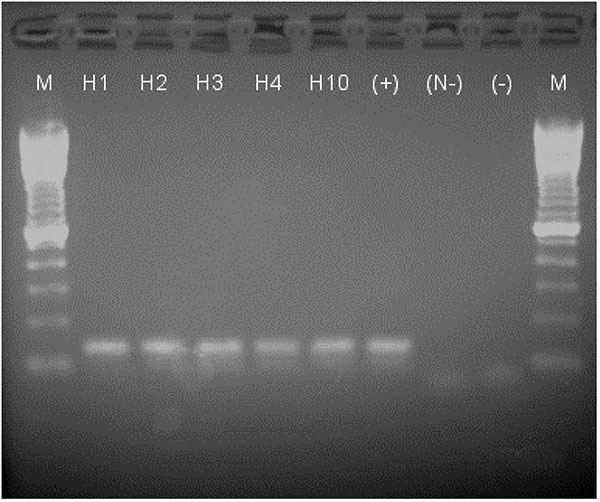Volume 9, Number 2—February 2003
Research
Equine Amplification and Virulence of Subtype IE Venezuelan Equine Encephalitis Viruses Isolated during the 1993 and 1996 Mexican Epizootics
Figure 5

Figure 5. Results on 1.5% agarose gel of reverse tranferase–polymerase chain reaction (RT-PCR) products stained with ethidium bromide and imaged under UV light. M: 100-bp marker; H1–4, H10: horses 1–4 and 10; (+): positive control viral RNA, 1.8 x 102 PFU amplified; (N-): negative control for nested PCR (-); negative control from single round RT-PCR. All horse samples and the positive control show a band at the expected size (134 bp), and negative controls show only the primers (below 100 bp).
Page created: December 07, 2010
Page updated: December 07, 2010
Page reviewed: December 07, 2010
The conclusions, findings, and opinions expressed by authors contributing to this journal do not necessarily reflect the official position of the U.S. Department of Health and Human Services, the Public Health Service, the Centers for Disease Control and Prevention, or the authors' affiliated institutions. Use of trade names is for identification only and does not imply endorsement by any of the groups named above.